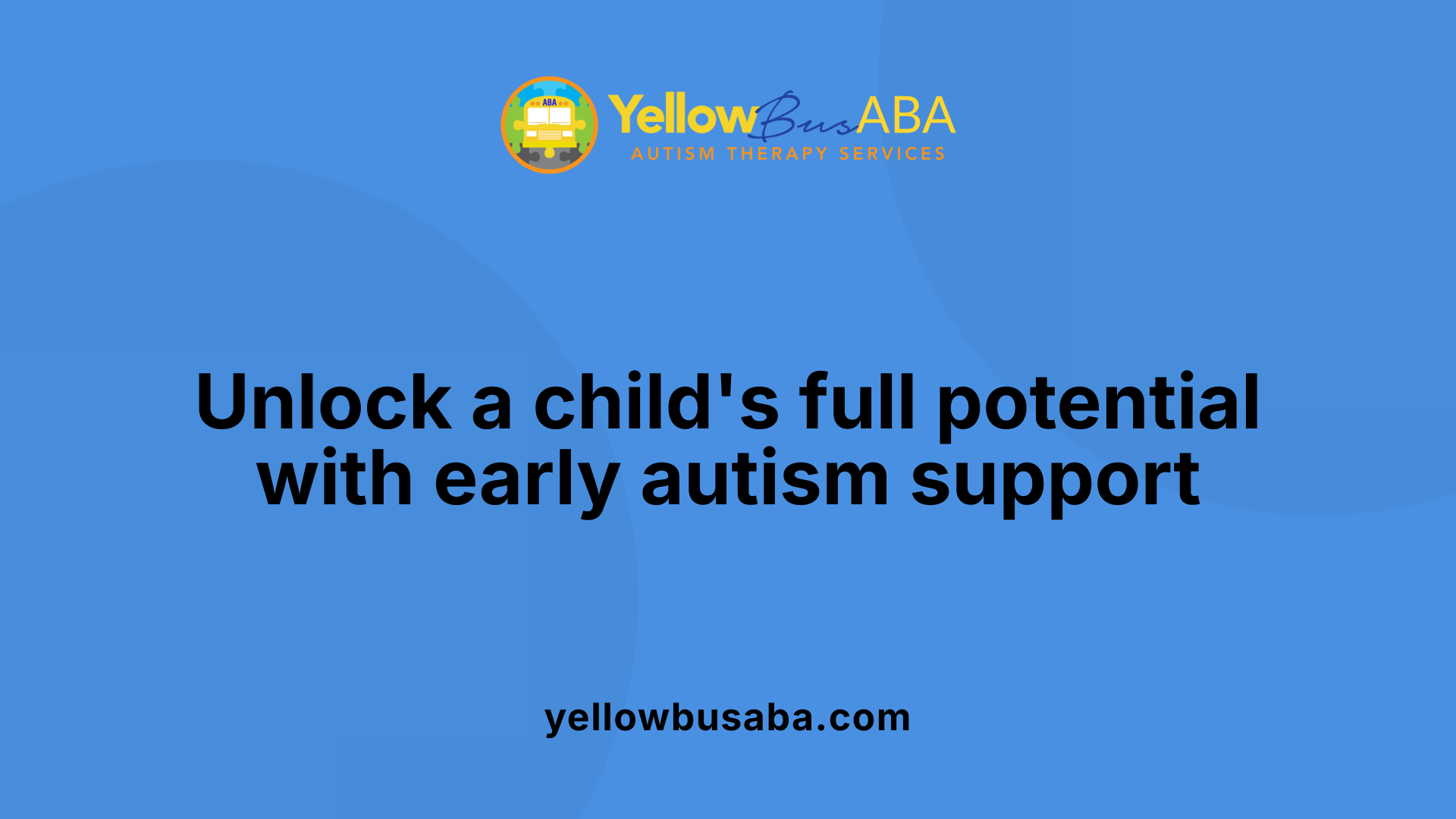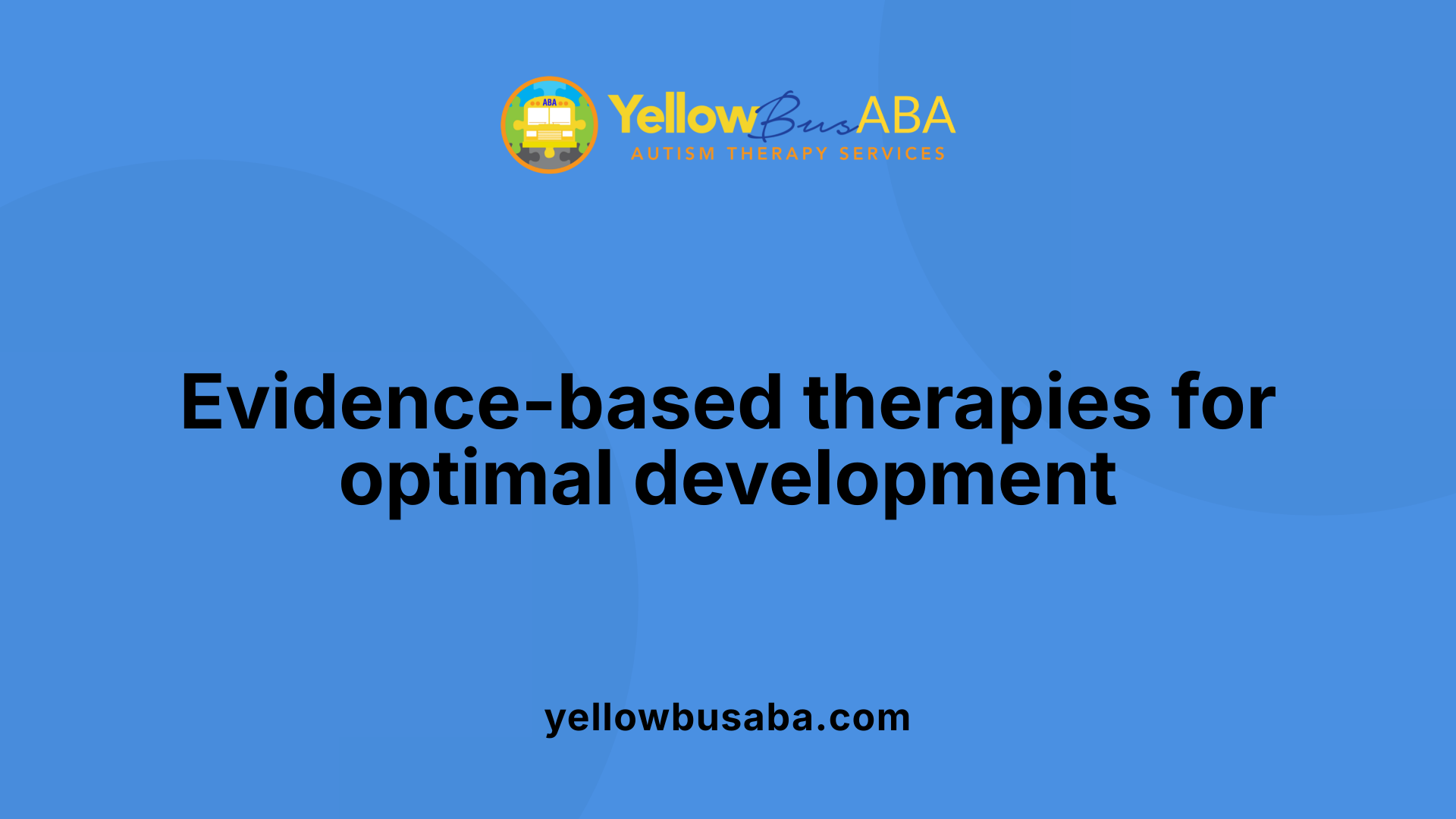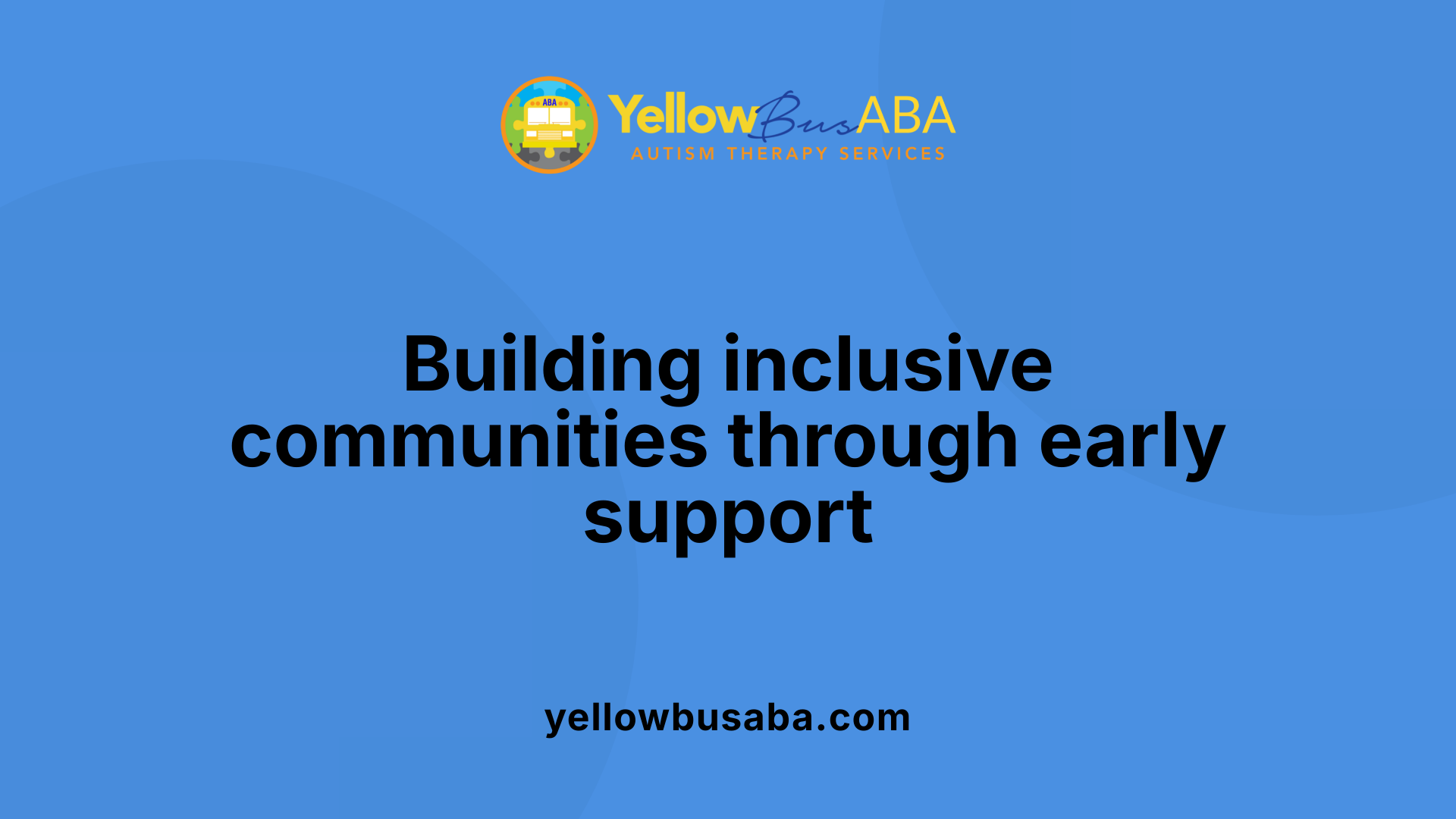Understanding the Critical Window in Autism Treatment
Early childhood intervention plays a pivotal role in shaping the developmental trajectory of children with autism spectrum disorder (ASD). By initiating tailored therapies during the brain’s most malleable period, typically before age 3, caregivers and healthcare professionals can significantly improve social, communicative, and behavioral outcomes. This article explores the importance, benefits, methods, and evidence behind early intervention, illustrating its profound impact on children and their families.
Why Early Childhood Intervention is Critical for Autism

Why is early intervention for autism important?
Early intervention plays a pivotal role in supporting children with autism during their most critical developmental years. Starting therapies around ages 2 to 3 can significantly improve social, communication, and behavioral skills. Because the young brain is highly adaptable, early treatment can reduce core autistic symptoms, enhance language and motor abilities, and foster cognitive development.
Research indicates that children who receive tailored interventions such as speech therapy, family training, and behavioral therapies early on are more likely to develop essential skills and reach their full potential. In some cases, early and intensive intervention can even lessen autism symptoms over time, providing children a better chance at social integration, independence, and a higher quality of life. Ultimately, early intervention maximizes developmental gains when the brain's plasticity is at its peak.
How does neuroplasticity and brain development in early childhood support intervention?
Neuroplasticity refers to the brain's remarkable ability to reorganize itself by forming new neural connections. This capacity is especially pronounced in early childhood, from birth up to around age five.
During this period, the brain is still developing, making it highly receptive to learning and adaptation. Interventions that target social, communication, and behavioral skills during this window of neural flexibility can lead to lasting changes in brain architecture. Techniques like applied behavior analysis (ABA) and relationship-based therapies capitalize on this plasticity, helping children develop foundational skills that support lifelong learning.
By providing consistent, engaging, and evidence-based therapies early on, caregivers and professionals can significantly influence a child's developmental trajectory. The earlier these interventions start, the more effectively they can shape neural pathways, often leading to more substantial improvements than later treatments.
What are the long-term developmental benefits?
The long-term benefits of early intervention are substantial. Children who begin therapy at a young age tend to demonstrate higher IQ scores, better language and social skills, and greater independence as they grow older.
Interventions not only reduce autistic symptoms but also promote skills essential for school success, such as communication, emotional regulation, and problem-solving. Moreover, early treatment can decrease problematic behaviors like meltdowns and repetitive activities, making learning environments more accessible.
Family involvement in early intervention also supports emotional well-being for both children and parents, reducing stress and empowering families to aid their child's development.
Overall, early childhood intervention sets a solid foundation for optimal developmental outcomes, enabling children with autism to participate more fully in society and lead more fulfilling lives.
Methods and Approaches in Early Childhood Autism Intervention

What methods and approaches are used in early childhood intervention for autism?
Early intervention for children with autism incorporates a range of therapies designed to support development across multiple domains. One of the most widely used and evidence-supported methods is Applied Behavior Analysis (ABA), which breaks down complex skills into small, manageable steps and teaches them through repetition and reinforcement. ABA has been proven effective through decades of research and is recommended as a cornerstone treatment.
In addition to ABA, speech and language therapy are fundamental in helping children improve communication skills. These therapies focus on expanding vocabulary, understanding social cues, and developing expressive and receptive language abilities. Occupational therapy plays a role in enhancing fine motor skills, sensory processing, and everyday functional activities.
Social skills training helps children learn to initiate conversations, understand social cues, and form meaningful relationships. Approaches like the Early Start Denver Model (ESDM) utilize play-based, relationship-focused strategies that leverage natural settings to foster learning. Such methods are particularly effective because they capitalize on the brain's heightened plasticity during early years.
What naturalistic and play-based strategies are used?
Naturalistic, play-based interventions are designed to make learning engaging and relevant to a child's daily life. These strategies involve implementing therapy during everyday routines and play, making skill acquisition spontaneous and functional. For example, therapists and parents use play to teach communication and social skills, reinforcing behaviors in environments where children naturally explore.
Programs such as Pivotal Response Treatment (PRT) and community-based peer interaction activities promote social engagement within natural contexts. These approaches help children generalize skills outside formal therapy sessions, encouraging real-life application.
How does family involvement enhance the intervention process?
Family involvement is central to early autism intervention. Parents and caregivers are often trained as co-therapists, learning techniques to support their child's progress at home and in community settings. This active participation not only reinforces skills learned during therapy but also promotes consistency and generalization.
Family-centered interventions reduce stress and empower parents by providing education, resources, and emotional support. They help create a nurturing environment that stimulates development, improves family dynamics, and enhances the child's overall well-being.
In conclusion, early childhood autism intervention employs a combination of evidence-based therapies, naturalistic strategies, and family involvement. These approaches work synergistically to support the child's developmental potential, improve social and communication skills, and reduce challenges associated with ASD.
Impact of Early Intervention on Symptoms and Development

How does early intervention impact autism symptoms, social skills, communication, and behavioral development?
Providing support as early as possible in a child's development is crucial for improving outcomes in autism spectrum disorder (ASD). When intervention begins during the formative years, especially before age five, it can lead to noticeable reductions in core autistic symptoms such as repetitive behaviors and difficulties with social interactions.
Early intervention programs often include a combination of therapies like speech-language therapy, behavioral interventions, and parent training. These approaches are designed to improve social and communication skills, enhance understanding of social cues, and foster emotional regulation. Because a child's brain is highly adaptable during this period—a concept known as neuroplasticity—these therapies are particularly effective.
Research demonstrates that children who receive early, intensive support tend to develop better language and social skills. They may learn to initiate conversations, understand others' emotions, and build meaningful relationships. Additionally, early intervention addresses behavioral challenges, teaching children appropriate ways to express themselves and manage frustrations.
Some children experience such significant progress that their symptoms diminish to a degree that they are no longer classified on the spectrum. In rare cases, early diagnosis and consistent treatment can lead to a change in diagnosis, such as from autism to PDD-NOS, reflecting milder symptoms. The overall effect of starting intervention early is a stronger foundation for future success in school, independence, and daily life.
In summary, initiating intervention during the early years can substantially reduce autism symptoms, improve social and communication abilities, and help children develop crucial life skills. This proactive approach harnesses the brain's natural plasticity, offering children with autism their best chance to reach their full developmental potential.
Evidence Supporting Effectiveness of Early Childhood Intervention
Research consistently demonstrates that initiating early intervention for children with autism leads to meaningful improvements across various developmental domains. Clinical studies and randomized controlled trials have shown significant benefits, especially when intervention begins before age five, with some research focusing on children as young as 18 to 47 months.
One influential program, the Early Start Denver Model (ESDM), emphasizes play-based, relationship-focused therapy. A notable study involving children aged 18 to 30 months found that those receiving targeted intervention showed an average IQ increase of about 18 points compared to a control group. Additionally, these children exhibited substantial gains in language and social interaction, with some improving so markedly that a formal autism diagnosis was downgraded.
Other targeted approaches such as Applied Behavior Analysis (ABA) have a strong evidence base, supported by over three decades of research. Intensive ABA therapy, often delivered at around 40 hours a week, has been shown to help children develop essential skills, reduce problematic behaviors, and improve independence.
Programs like the Treatment and Education of Autistic and Related Communication-Handicapped Children (TIPA-T) or integrating peer interactions with naturalistic settings further enhance outcomes. These approaches not only boost IQ, language, and social skills but also support emotional regulation and behavioral improvements.
In summary, the data indicates that early identification and tailored intervention—particularly when started within the first few years of life—can transform the developmental trajectory of children with autism. The combined evidence underscores the importance of early, intense, and evidence-based therapies to maximize long-term developmental potential.
The Broader Impact of Early Intervention Programmes

What are the benefits of early intervention for autism?
Early intervention plays a crucial role in shaping the developmental trajectory of children with autism. When therapy begins during the early years—often before the age of 3—it can lead to substantial improvements across multiple developmental domains, including social, communication, and behavioral skills.
Research indicates that early and targeted therapies can reduce core autism symptoms. In some cases, children show enough progress to no longer meet criteria for an autism diagnosis later in life. Programs often include speech and language therapy, family training, behavioral strategies like applied behavior analysis (ABA), and social skills training. These interventions harness the high brain plasticity present in young children, helping them develop essential skills such as initiating conversations, understanding social cues, and managing emotions.
Starting intervention early not only boosts a child's ability to participate in mainstream education and community activities but also reduces long-term dependence on specialized services. Moreover, engaging children in supportive environments fosters inclusion, promotes social integration, and encourages participation in community life.
Early intervention also benefits families significantly. It can lessen parental stress by providing parents with tools and knowledge to support their child's development effectively. This support improves family dynamics, creating a more nurturing environment for the child.
Long-term societal benefits include increased independence for individuals with autism, reduced healthcare and special education costs, and a more inclusive community framework. Overall, initiating early intervention maximizes a child's potential for growth, aligns with evidence-based practices, and offers lasting positive impacts on both individual lives and society.
Early Intervention: A Foundation for Lifelong Success
Harnessing neuroplasticity during early childhood through timely, evidence-based interventions can dramatically alter the developmental pathways for children with autism. Starting early not only reduces symptoms but also enhances critical skills, educational participation, and social integration, thereby setting the stage for a more independent and fulfilling life. As research continues to underscore the importance of early diagnosis and intervention, families, caregivers, and practitioners are encouraged to advocate for prompt, comprehensive, and individualized care. Ultimately, early childhood intervention is a vital component in the fight to improve life outcomes for children with autism, ensuring they reach their full potential.
References
- Early Intervention for Autism | NICHD
- Importance of Early Intervention in Reducing Autistic Symptoms and ...
- Accessing Services for Autism Spectrum Disorder - CDC
- 5 Benefits of Early Intervention for Autism - LEARN Behavioral
- The Role of Early Intervention in Supporting Children With Autism
- Early Intervention - UNC Autism Research Center
- Earlier autism interventions - American Psychological Association
- Understanding The Significant Impact Of Early Intervention



.jpg)

.avif)
